Before I share my thoughts on BAT’s Capital Markets Day (“CMD”), I want to disclose that I increased my stake in BAT by 10% yesterday. Overall it inspires confidence in achieving “3-5% organic revenue growth, and mid-single figure adjusted profit from operations growth, on an organic, constant currency basis by 2026”, while also acknowleding challenges in its U.S. business, heated tobacco, vaping business candidly. I strongly encourage fellow shareholders to watch the webcast and the presentation materials so you may gauge the management’s tone in delivering their presentation and answering questions from analysts and institutional investors. Tobacco Insider has published an article to summarise the key points of CMD, which you may want to read if you don’t have time to watch the full webcast. I will focus my analysis on areas not covered in Tobacco Insider’s article. Here we go!
In Tadeu Marroco’s presentation entitled “Building a Smokeless World”, he spent a lot of time discussing the case study in Europe (p.17-26, 10 pages in total), highlighting BAT’s success in this region. Then he spent a few minutes briefly covering the situation in the U.S. (p.27-29) .While typical sell-side research reports put a lot of focus on BAT’s U.S. business (which accounted for 54% of operating profit in 2023), let’s not forget that BAT still has a sizeable ex-U.S. business. Its strength in Europe is often ignored due to lack of access to credible source of data for research analysts to plot fancy charts. As you may find below, BAT has presented Europe specific data with more granularity than disclosure in half-year and full-year result presentation.
Here comes the slide that prompts me to increase my stake in BAT by 10%. It is extracted from Insights & Foresights presentation by Julian Prynn, Group Head of Consumer Insights & Foresights.
Does it look familiar to you? Here is a slide extracted from Imperial Brand’s capital market event in New York in June 2023 entitled Investor seminar: Start with the Consumer.
In essence, it is a “customer-centric” approach to drive innovation, R&D and marketing. It starts with defining what the customers want before allocating corporate resources and pivoting the organisational structure to deliver against customer demand, NOT THE OTHER WAY ROUND. It is perhaps well summarised by Joe Tsai, Alibaba CEO’s interview with Nicolai Tangen, CIO of Norges Bank Investment Management in April 2024.
The first thing we did was to admit our mistake: in the past, we may not have focused on user experience.
The second thing was to reorganize our personnel, changing the organizational structure to align with the strategy. I think this is a common problem in large companies. Large companies set something in their organizational structure, and then they don't change it because people don't like change, they don't want to change jobs. They are afraid of being fired.
Then, it's about integrating the company's direction into your organizational structure. It shouldn't be like that, it should be another way, you should define the direction, and then set up the company's organization.
Here are the slides extracted from presentation by Luciano Comin, Chief Marketing Officer, entitled Building our Brands: Vapour, Heated Products & Modern Oral, and presentation by Zafar Khan, Group Operations Director, entitled Accelerating R&D & Innovation Ecosystem. It provides concrete example of how BAT embodies insights and foresights into development and marketing of Glo Hyper Pro as well as Vuse / Velo. You can see how they address each customer pain point leveraging on insights and foresights when developing this product. Glo Hyper Pro is still not good enough to compete against IQOS Iluma, but at least BAT is adopting the right approach to craft its product development roadmap.
For the first time, BAT defined Glo Hyper as the category leader in the affordable segment of heated tobacco, while >80% of the heated tobacco category is in the premium segment. They also openly admitted that “BAT has nothing in the premium segment to compete against the leading player”. This narrative is in stark contrast to their previous comment that Glo Hyper Pro is a premium device to compete against the leading player (i.e. PMI’s IQOS Iluma). Here is a comment made by BAT in its Interim Results 2024 Presentation and Conference Call.
As part of our innovation pipeline, Hyper Pro is an important first step into the premium heated tobacco segment. As a result, we are seeing an improving performance with our June volume share up 60 basis points in Japan and up 70 basis points in Italy versus December.
To challenge IQOS Iluma, BAT will launch Glo Hilo in late 2024 or early 2025. Here is a peek at the device and initial feedback by selected consumers in product trial. I think there will be more clarity to its launch during BAT’s pre-close trading update in December or no later than annual result announcement in February 2025. While it is too early to tell whether Glo Hilo will be competitive, I do appreciate BAT acknowledging their absence in the premium segment and moving on from Glo Hyper. Better late than never.
While Zyn is the leader in the modern oral category, Velo’s success in the category is often ignored by sell-side research analyst. What sets them apart? Velo wins in almost every international market but fails in the U.S. whilst Zyn fails in almost every international market but only wins in the U.S.. That’s mainly because BAT can’t legally sell the European version of Velo (“Velo 2.0”) in the U.S.. Let’s recall that President Biden signed H.R. 2471 – the Consolidated Appropriations Act, 2022, which required “Manufacturers of non-tobacco nicotine products on the market as of April 14, 2022 that wish to continue to market their products are required to submit a PMTA by May 14, 2022.” The European version of Velo couldn’t qualify for that.
As we all know, BAT has already filed PMTA for Velo 2.0. It is only a matter of time before BAT introduces Velo 2.0 to the U.S. and potentially challenges Zyn’s market leadership.
Tadeo Marroco just layed out BAT’s expectation of ITCAN litigation outcome.
ITCAN may reach a settlement by the end of this year as per Canada Court’s resolution.
GBP2.4bn restricted cash in Canada is expected to be all gone to settle the litigation. There will be ongoing payment in the future which significantly reduces operating profit from Canada. Canada currently accounts for mid-single digit percentage of BAT’s operating profit, so there could be low single digit headwind to BAT’s bottom line from 2025 onwards. Note that it is quite different from the Master Settlement Agreement in the U.S., when the excise tax in the U.S. was very low and the industry just lived with a excise tax hike and moved on. The excise tax in Canada is already very high, thus any on-going payment will eat into the industry’s profit pool. Taking into GBP2.4bn cash gone and reduced operating profit in Canada, net debt to EBITDA of BAT shall increase by 0.3x following the settlement on a pro-forma basis.
The settlement shall address the past, present and future, i.e. once and for all, such that the industry can move on.
The litigation will only be targeted at the combustible business of ITCAN without recourse to BAT plc. i.e. NGP and beyond nicotine business in Canada will remain intact.
The presentation by Kingsley Wheaton, Chief Corporate Officer, Dr. James Murphy, Director Research & Science and Flora Okereke, Group Head of Global Policy, entitled Sustainable Future, doesn’t quite inspire much confidence in BAT’s approach to shaping the regulatory landscape. BAT seems to put too much focus on lower mortality and morbidity of NGP comparing to cigarettes, but it is not enough to drive meaningful change in regulatory landscape. As PMI CEO once suggested, the problem with regulators is not too little science, but TOO MUCH POLITICS. To counter politics, science alone is not good enough. PMI also leveraged on public opinion and issues that politicians concern the most (i.e. tax revenue) to put pressure on politicians on varoius issues, ranging from illicit cigarette trading (i.e. urge governments not to increase excise tax excessively) to tobacco harm reduction (i.e. urge governments to open up and regulate the non-combustible market allowing PMI to roll out IQOS and ZYN). See below:
The presentation by Cora Koppe-Stahrenberg, Chief People Officer, entitled Our Cultural Transformation, doesn’t look impressive. This looks quite average but not good enough for a large company undergoing transition to a more sustainable business model. BAT employs more than 46,000 employees and as it transitions to a smokeless world, a lot of them will have to be let go. Nobody likes to lose their job so within the organisation, people will try their best to justify their value to their employers. The key problem with HR is not how they hire new people to strengthen their capabilities in certain areas, but the principles guiding their decision to empower the new hires, promoting/rewarding capable employees, retaining valuable employees who their competitors also need and firing people who are surplus to the organisation in order to increase the “talent density”.
There are not many large companies with a clear set of principles in doing this, except Netflix. When it comes to firing/retaining people, Netflix makes its framework quite clear. Below is extracted from Netflix Culture — The Best Work of Our Lives.
And to ensure they have the right player at every position, we ask them to apply what we call the “keeper test” — asking “if X wanted to leave, would I fight to keep them?” Or “knowing everything I know today, would I hire X again?” If the answer is no, we believe it’s fairer to everyone to part ways quickly.
While one may argue BAT is not Netflix, please go visit Reynolds American’s Glassdoor review page and you will find out the common complaints by employees working there. Reynolds American have no problem with hiring the right people, but often fail to empower them, retaining / rewarding / promoting the top talents. Somehow certain underperforming employees can’t be let go due to their close relationship with the management. To put it in perspective, you can hire someone from Apple to design the best vape / heated tobacco device ever, but it would be meaningless if the senior management from London gives the genius guy weird instructions to alter the design. In certain situations a corporation is as good as its weakest link.
Conclusion:
There are some positive and negative takeaways from the CMD, but overall speaking near term prospect is still unclear. It takes time to accelerate BAT’s revenue and profit growth. To be fair, IMB didn’t revitalise its business right after Stefan Bomhard took over as CEO in 2020. Now IMB is growing its EPS at double digit comfortably. For BAT, it will be great if they can show some early sign of recovery in 2025, and deliver at least 3% revenue growth and 4% operating profit growth in 2026. Will see.



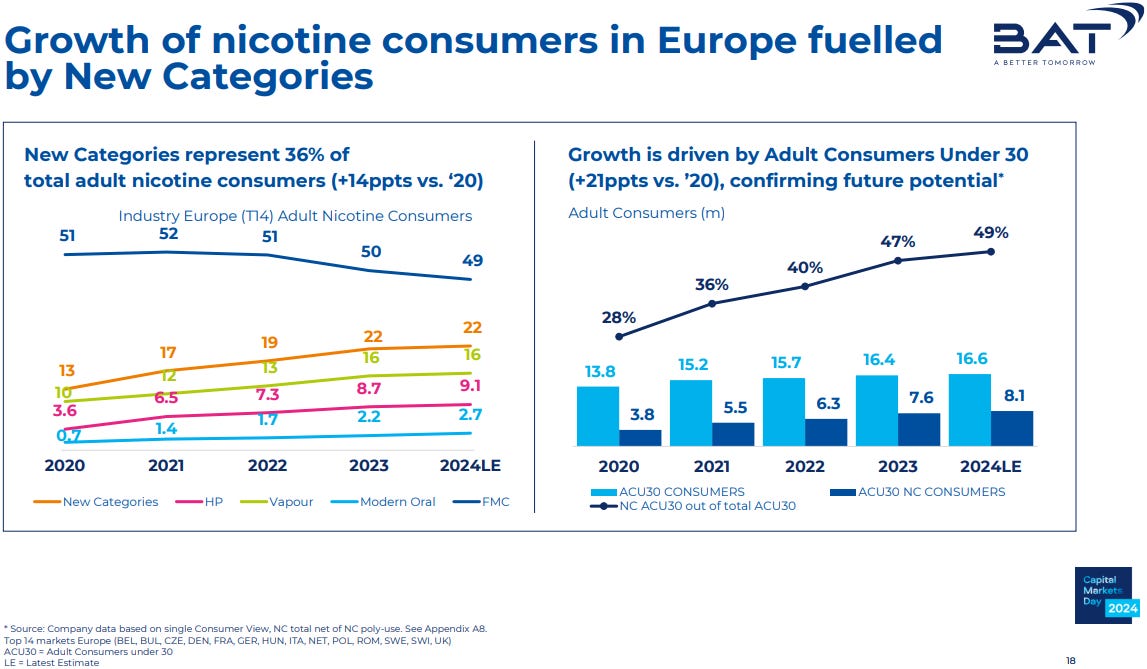
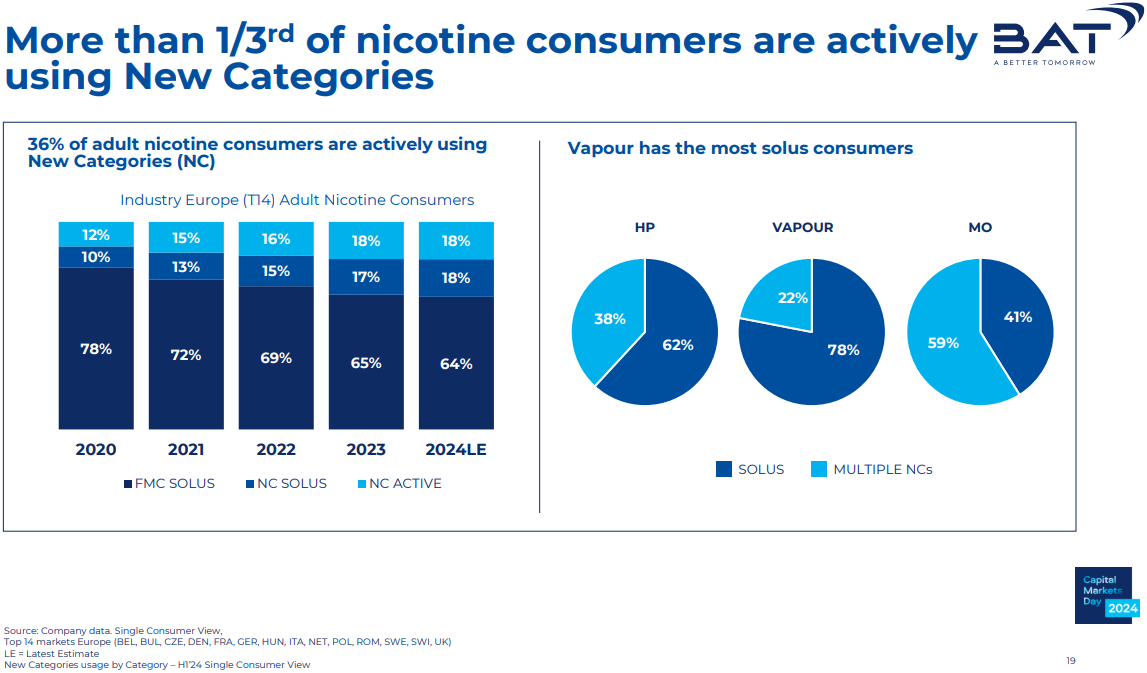
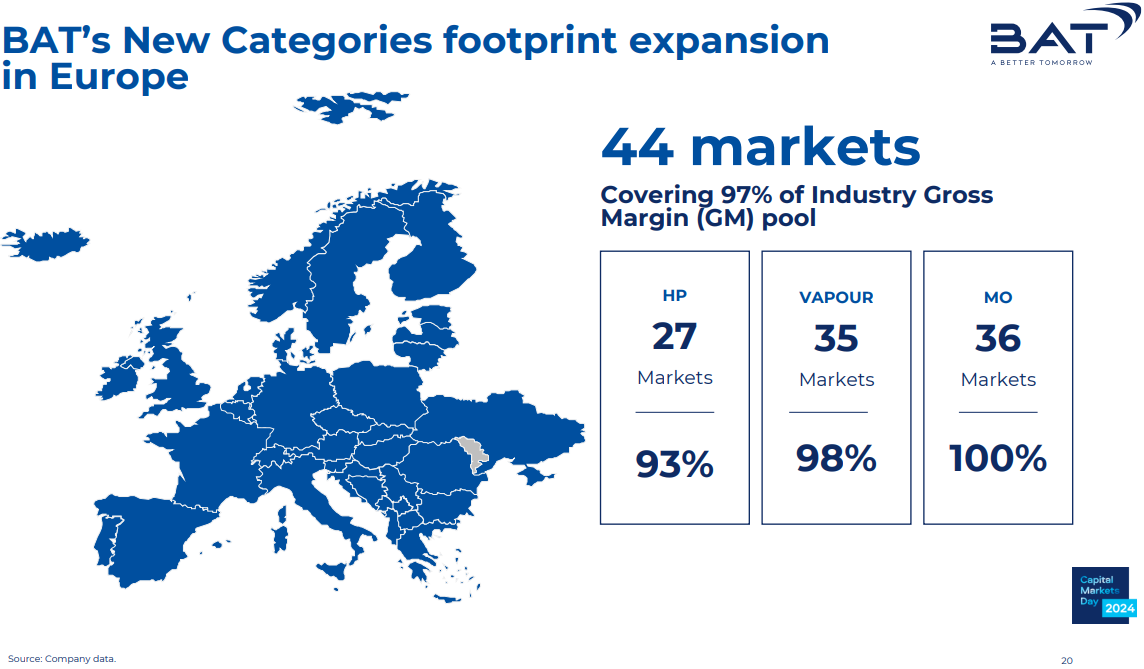

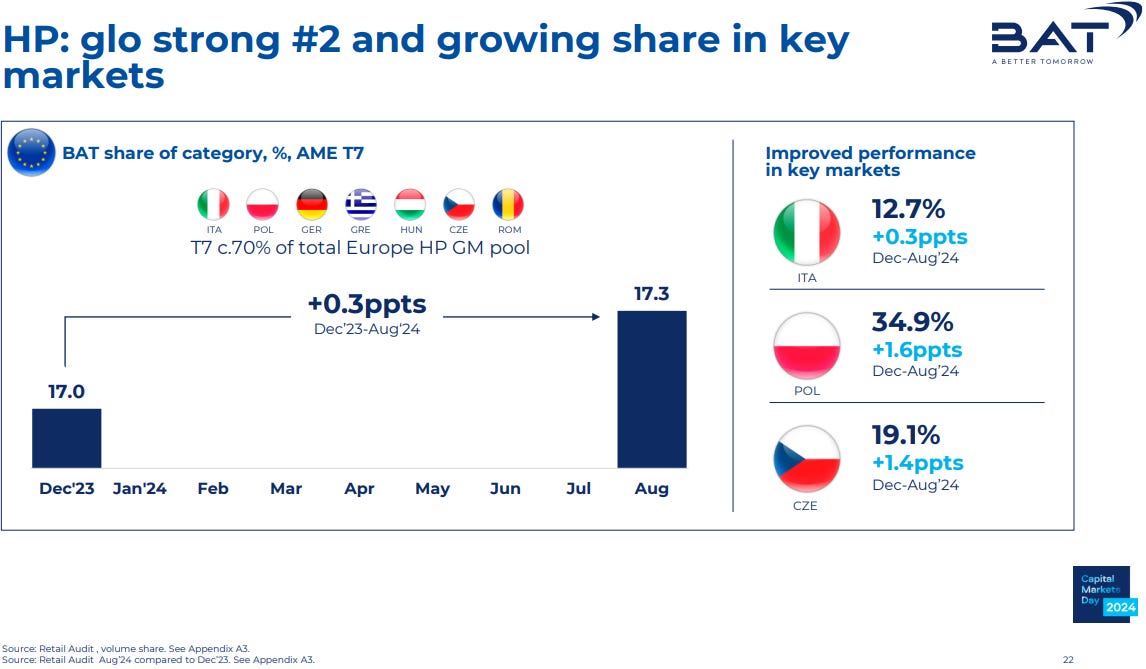
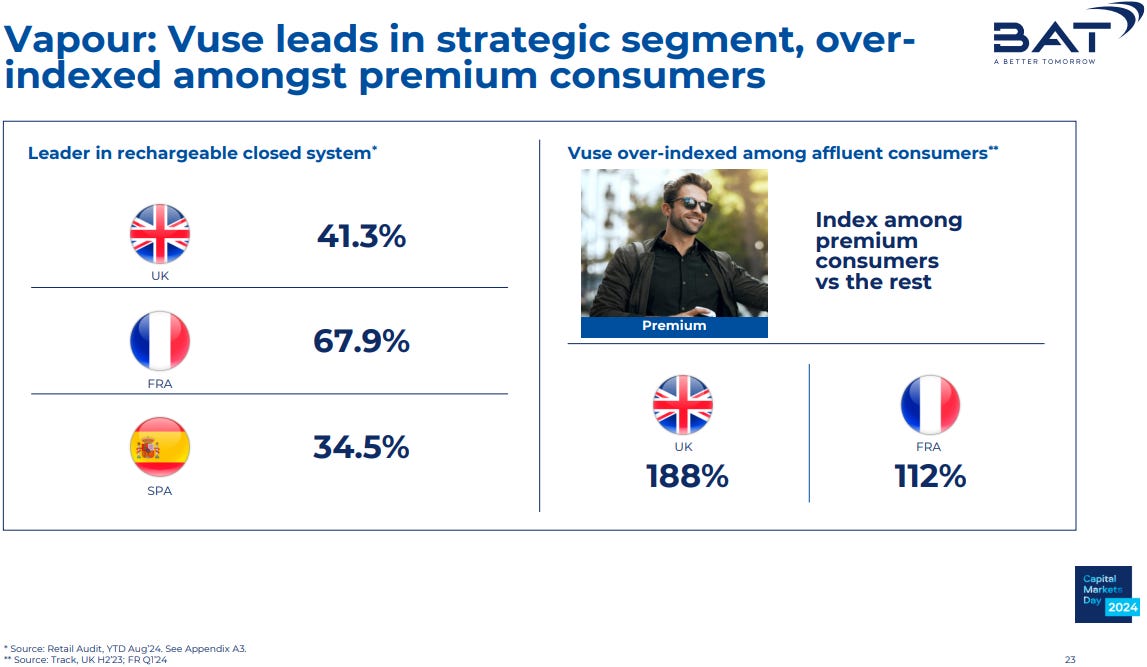



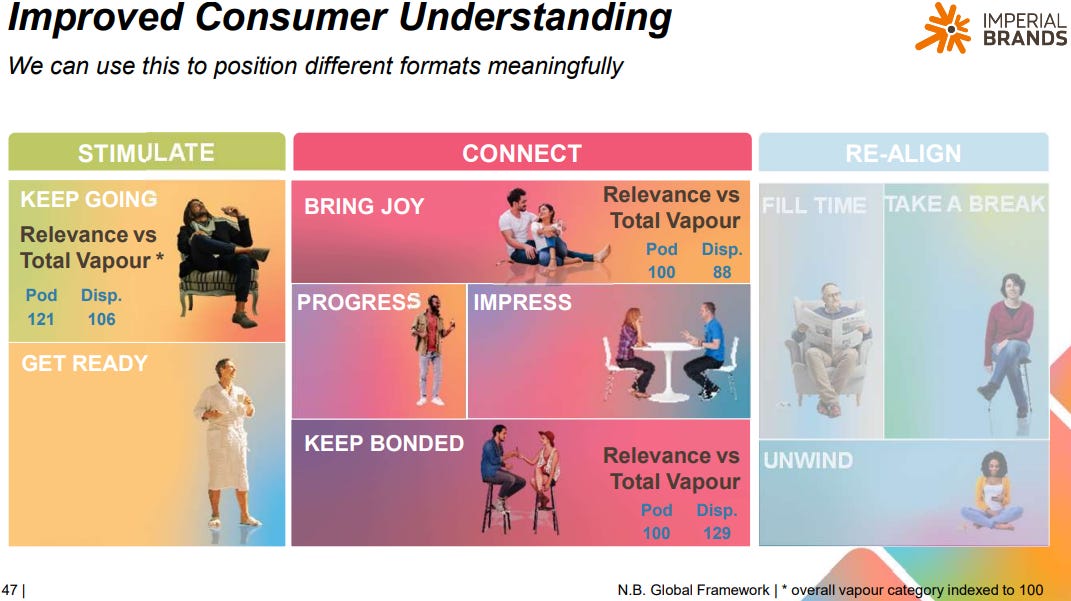
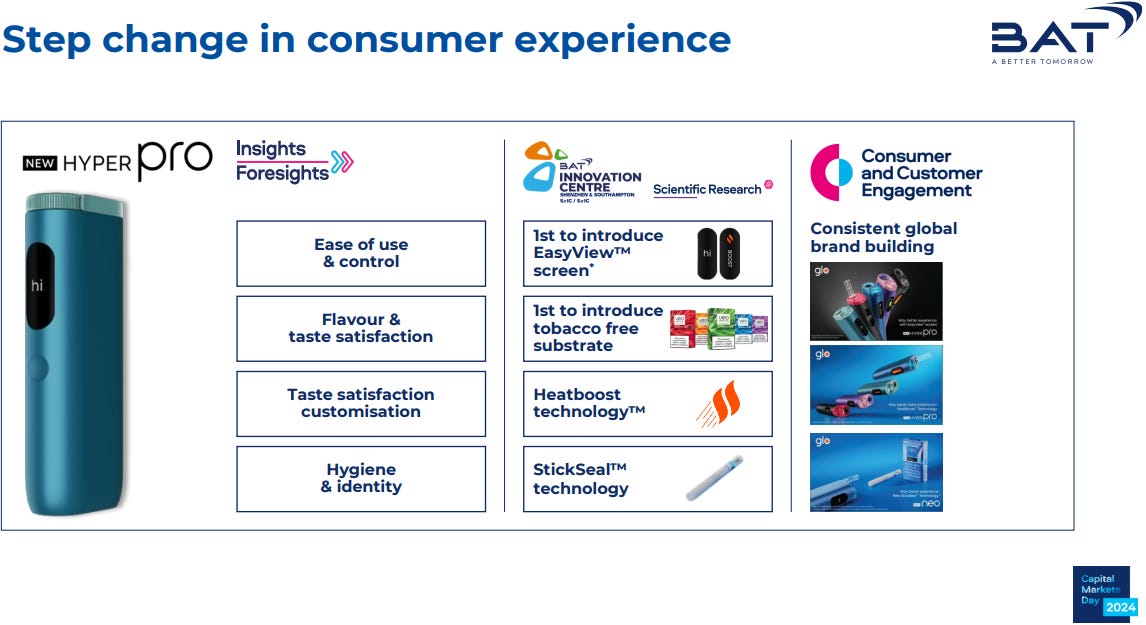
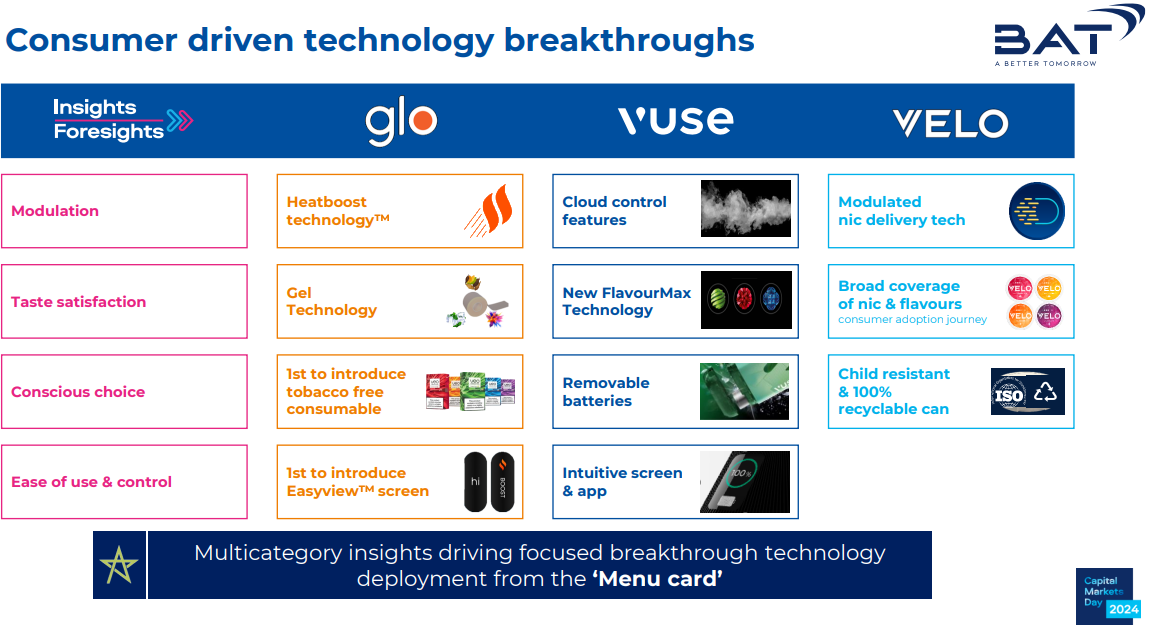
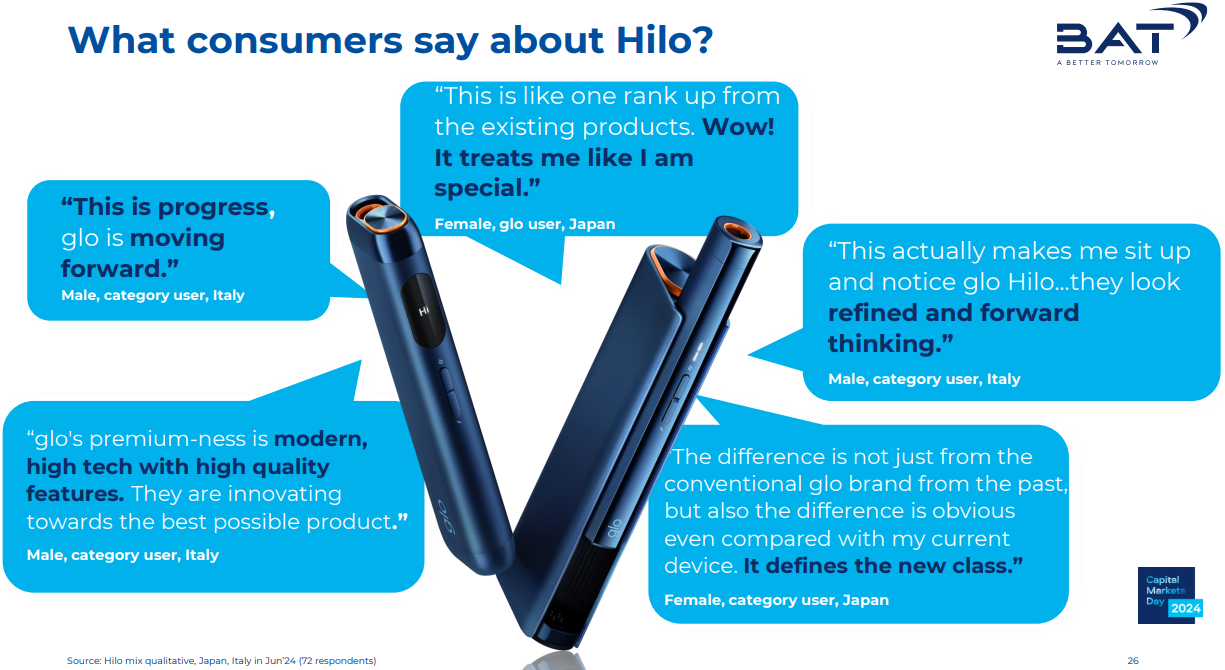
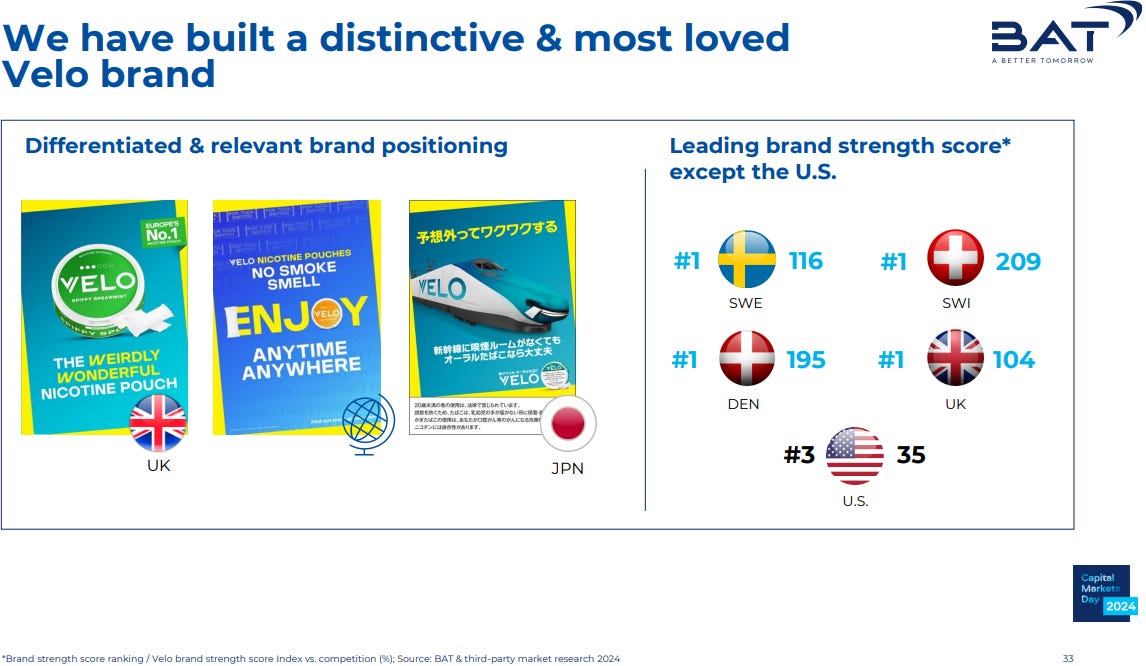
My biggest position with about 200K EUR invested...
10% stake increase after a power point presentation is brave, I sincerely hope it turns out well since BAT makes 24% of my portfolio and is by far my biggest position.
I often consider adding more shares, but I will wait and see how the illicit vaping situation in the US resolves, or at least until the November elections.